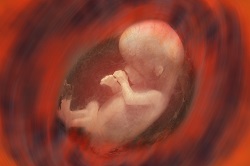Prenatal famine exposure has sex-specific effects on brain size
As part of the EU-funded BRAINAGE project, researchers from the University of Amsterdam and Jena University Hospital, Germany, studied prenatal exposure during the five-month Dutch famine that took place in the densely populated Western provinces, towards the end of the Second World War. The study has highlighted how men, but not women, who were exposed to famine in early gestation have smaller brain volumes than unexposed controlled participants at the age of 68 years. The research team performed MRI scans on individuals who were born in Amsterdam around the time of the Dutch famine. During the famine, official daily rations varied between 400 and 800 calories, only around a quarter of the daily calorie needs of an adult. An estimated 30 000 people starved to death but despite the harsh circumstances, women still conceived and gave birth. Conducting the study It has already been documented that prenatal exposure in the Dutch famine during the first trimester posed a serious threat to brain development and increased the risk of central nervous system (CNS) anomalies, such as spina bifida and hydrocephalus. However, there was until this study little known on the effects on brain size in older age. In order to explore this further, the research team recruited a cohort of 2 414 men and women who were born in the same hospital in Amsterdam (the Wilhelmina Gasthuis) from 1 November 1943 to 28 February 1947. They were divided into exposed and unexposed groups based on their date of birth. The team considered a person to be prenatally exposed to the Dutch famine if the average daily ration was less than 1 000 calories during a 13-week period in pregnancy or if the person endured a 16-week period of general exposure in early, mid or late gestation. People born before the famine or were conceived and born after the famine were considered to be unexposed and acted as a control group. Differences between men and women In previous studies of this cohort, the researchers had shown that exposure to famine during early gestation had the most impact on both mental and physical health in later life, including obesity, breast cancer, coronary heart disease, depression and even food preferences. Thus in this study, they focused on the early exposed group and took MRI scans of 118 cohort members, with 41 exposed to famine in early gestation and 77 unexposed to famine in gestation. The research team were particularly interested in brain size, structure and white matter integrity. They found no differences between exposed and unexposed groups in white matter integrity and hyperintensities. They also found no differences in structural volumes. Moreover, when they investigated the men and women separately, they found that men who had been exposed to the famine during early gestation had smaller intracranial volume than unexposed men, with a difference of about 5 %. Exposed men also showed smaller volumes of total cortical grey and white matter, cerebellar grey matter, thalamus and more specific cortical areas. Importantly, these volume differences were not seen in famine exposed women. One explanation may be the theory that males are more vulnerable to foetal programming but the research team also concedes that the effect seen on males may be due to bias, as women exposed to famine show increased mortality rates after the age of 63. Consequently, this could have led to the inclusion of the more healthy women, leading to an under estimation of the effect of prenatal exposure on women. Studies have shown that a smaller brain size obtained in childhood is associated with an increased likelihood of developing Alzheimer’s disease, as well as an increased severity of the disease and an earlier onset. ‘We think it’s outstanding that something that happened 68 years ago during pregnancy is still visible in the brains of these men,’ commented study co-author Dr. Susanne De Rooij. ‘We think that this clearly underlines the importance of maternal nutrition for brain development in early life but also in later life.’ For more information please see: project website
Countries
Germany



